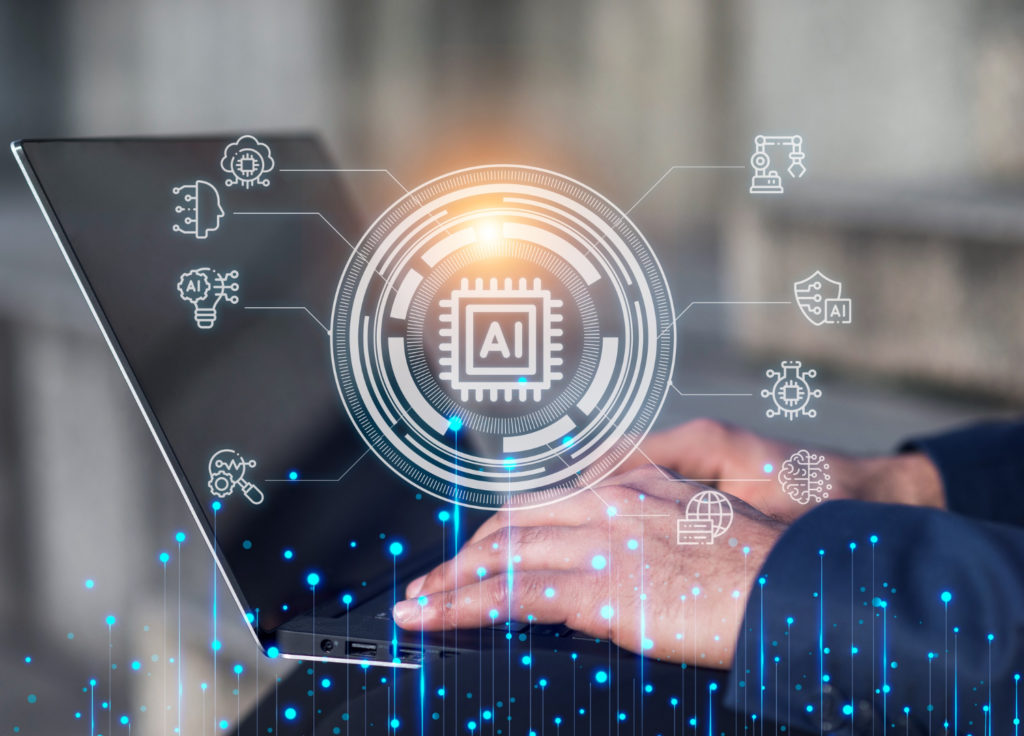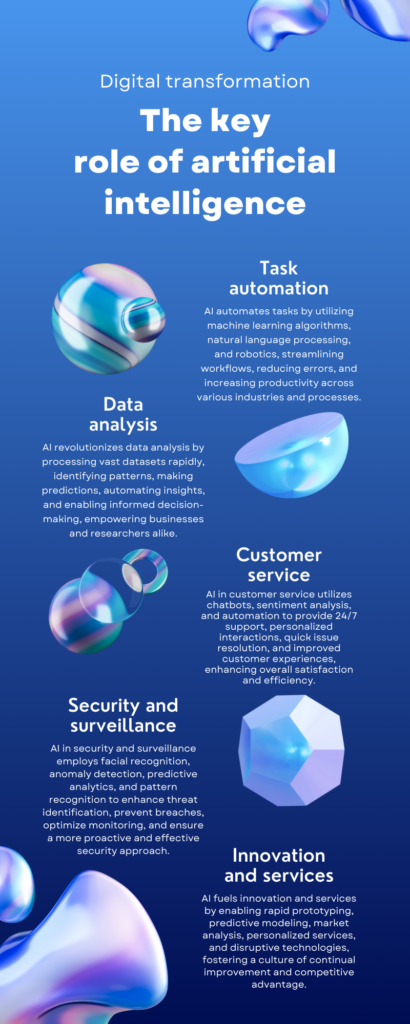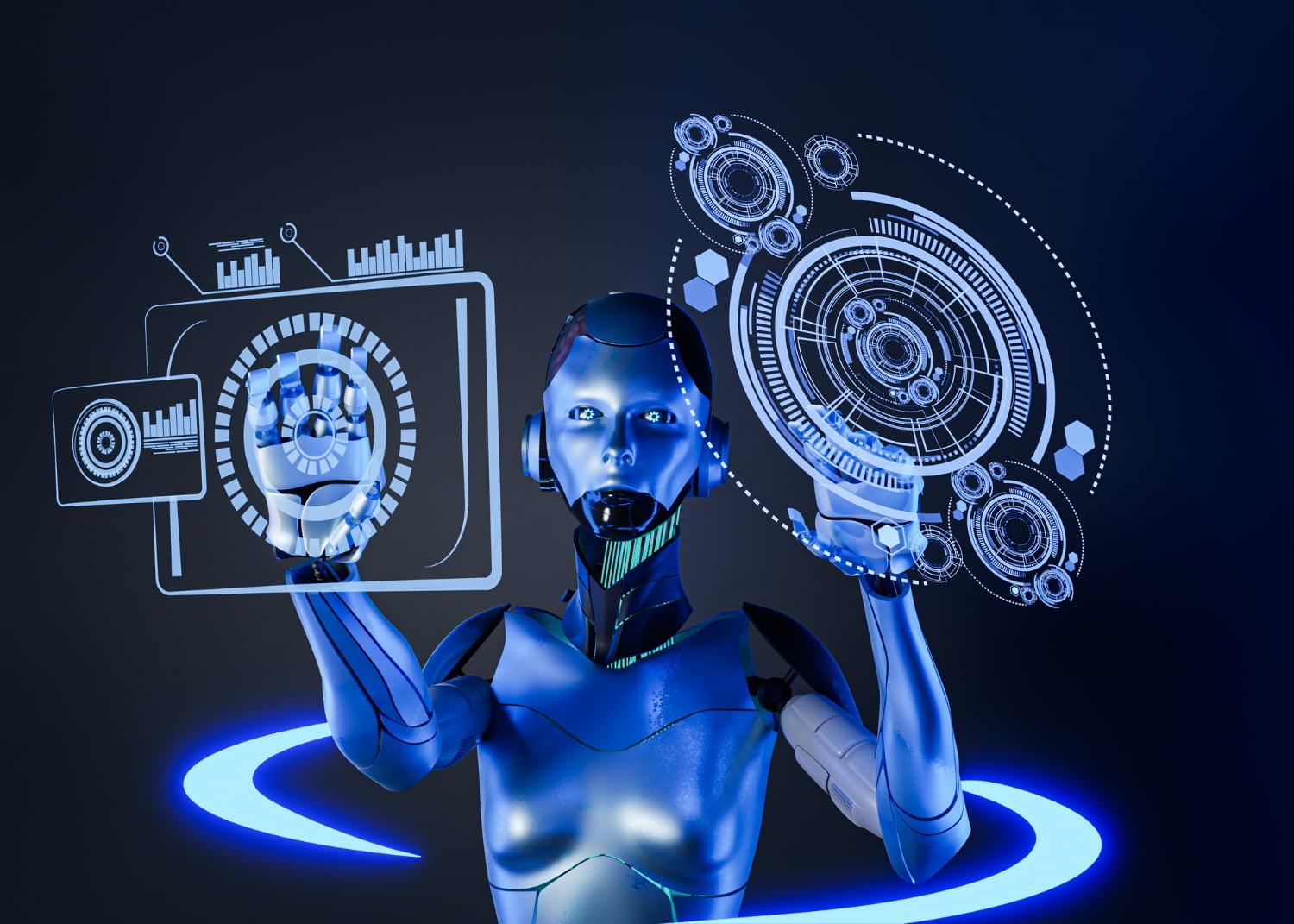Introduction
Sustainability ensures meeting current needs without jeopardizing future generations. Eco-conscious living minimizes environmental impact and supports all beings’ well-being. In our tech-driven era, sustainability gains crucial importance. Technology serves as a powerful tool to tackle climate change, biodiversity loss, and pollution. However, it brings challenges like e-waste, digital divides, and ethical dilemmas. Balancing technology’s benefits and risks is vital. Embracing sustainable practices, like reducing consumption, recycling, and supporting green innovations, aids global efforts in protecting the planet and securing a better future.

Artificial Intelligence (AI) involves creating machines that mimic human intelligence. It ranges from narrow AI, performing specific tasks, to the hypothetical general AI. Sustainability encompasses environmental, social, and economic dimensions: preserving natural resources, promoting human rights, and ensuring fair wealth generation without harming society or the environment.
How AI can promote sustainability
AI can promote sustainability in several ways, such as:
● Data analysis and optimization: AI can collect, process, and analyze large amounts of data from various sources, such as sensors, satellites, drones, and social media. This can help identify patterns, trends, and anomalies, as well as optimize processes and resources, such as energy consumption, waste management, and transportation.
● Innovation and creativity: AI can generate new ideas, solutions, and designs, based on existing data and knowledge. This can help create novel and efficient products, services, and systems, such as smart grids, renewable energy sources, and circular economy models.
● Decision-making and policy: AI can support decision-making and policy-making, by providing insights, predictions, and recommendations, based on data and models. This can help evaluate the environmental impact and trade-offs of different actions and scenarios, as well as monitor and enforce compliance and accountability.
● Awareness and education: AI can enhance awareness and education, by providing information, feedback, and guidance, based on data and personalization. This can help raise public awareness and engagement, as well as foster behavioral change and lifelong learning.
Examples of AI applications in various sectors
AI applications can be found in various sectors, such as:

Energy: AI can help improve energy efficiency, reliability, and affordability, by optimizing energy production, distribution, and consumption, as well as integrating renewable energy sources and storage systems. For example, Google uses AI to reduce the energy use of its data centers by 40%1.
Waste management: AI can help reduce waste generation, increase waste diversion, and enhance waste valorization, by optimizing waste collection, sorting, and processing, as well as creating new value from waste materials. For example, AMP Robotics uses AI to automate the sorting of recyclable materials.
Transportation: AI can help reduce greenhouse gas emissions, congestion, and accidents, by optimizing transportation modes, routes, and schedules, as well as enabling autonomous and shared mobility. For example, Uber uses AI to match drivers and riders and to provide dynamic pricing and surge pricing.
Agriculture: AI can help improve food security, quality, and safety, by optimizing crop production, irrigation, and pest control, as well as enabling precision agriculture and vertical farming. For example, Farm Wise uses AI to automate weed removal and crop cultivation.
Conservation: AI can help protect biodiversity, ecosystems, and natural resources, by monitoring wildlife, habitats, and environmental conditions, as well as detecting and preventing illegal activities, such as poaching and deforestation. For example, Wildbook uses AI to identify and track individual animals using photographs.
AI and sustainability are two interrelated and mutually reinforcing fields, that can offer immense opportunities and benefits for humanity and the planet. However, AI also poses some challenges and risks, such as ethical, social, and environmental implications, that need to be carefully considered and addressed. Therefore, it is essential to develop and use AI in a responsible, inclusive, and transparent manner, that aligns with the principles and goals of sustainable development.
Challenges and Limitations
Discussion on the challenges and limitations of using AI in promoting sustainability.
AI has the potential to transform various sectors and domains related to sustainability, such as energy, agriculture, transportation, health, and education. However, several challenges and limitations need to be addressed before AI can fully realize its benefits for sustainable development.
Some of the challenges and limitations are:
Data quality and availability:
AI relies on large amounts of data to learn and perform tasks. However, data may be scarce, incomplete, biased, or inaccurate, especially in developing regions or contexts where data collection and management are difficult. This may affect the reliability, validity, and generalizability of AI models and applications.
Ethical and social implications:
AI may have unintended or adverse consequences on human rights, privacy, security, accountability, and social justice. For example, AI may create or exacerbate digital divides, discrimination, surveillance, or manipulation. Moreover, AI may pose ethical dilemmas or conflicts with human values, norms, and cultures. Therefore, AI needs to be aligned with ethical principles and human-centered design.
Environmental impact:
AI may also hurt the environment, as it consumes a lot of energy and resources to operate and maintain. For instance, AI may generate greenhouse gas emissions, electronic waste, or resource depletion. Furthermore, AI may disrupt natural ecosystems or biodiversity, or interfere with ecological processes and services. Hence, AI needs to be environmentally friendly and efficient.
Regulation and governance:
AI may pose challenges for regulation and governance, as it may be difficult to monitor, control, or regulate its development and use. For example, AI may raise issues of transparency, explain ability, accountability, or liability. Moreover, AI may create or challenge existing legal, institutional, or policy frameworks or standards. Therefore, AI needs to be subject to appropriate regulation and governance mechanisms that ensure its safety, quality, and fairness.
Future Prospects
The Potential of AI in Furthering Sustainability Efforts Emerging trends and technologies
Artificial intelligence (AI) is not only a powerful technology that can help address the current sustainability challenges but also a catalyst for innovation and transformation that can enable a more sustainable future. AI can unlock new possibilities and opportunities for enhancing environmental, social, and economic well-being, as well as creating new value and impact for humanity and the planet.
Some of the potential of AI in furthering sustainability efforts are:
● Scaling and accelerating solutions: AI can scale and accelerate the existing solutions and best practices for sustainability, by automating, optimizing, and enhancing their performance, efficiency, and effectiveness. For example, AI can scale and accelerate the adoption of renewable energy sources, by improving their integration, management, and forecasting.
● Enabling new solutions: AI can enable new solutions and approaches for sustainability, by discovering, creating, and testing new ideas, methods, and models, that were not possible or feasible before. For example, AI can enable new solutions for carbon capture and utilization, by generating and evaluating new materials, processes, and products, that can reduce or reuse carbon dioxide emissions.
● Empowering stakeholders: AI can empower the various stakeholders involved in sustainability, such as governments, businesses, communities, and individuals, by providing them with the data, insights, tools, and platforms, that can help them make informed and responsible decisions and actions. For example, AI can empower stakeholders with personalized and contextualized information, feedback, and guidance, that can help them adopt more sustainable and eco-conscious behaviors and lifestyles.
Some of the emerging trends and technologies in AI and sustainability are:
● AI for good: AI for good is a movement that aims to use AI to address the global challenges and opportunities related to the United Nations Sustainable Development Goals (SDGs), such as poverty, health, education, climate change, and peace. AI for good initiatives and projects seeks to leverage the potential of AI to create positive social and environmental impact, as well as to ensure that AI is developed and used in an ethical, inclusive, and trustworthy manner.
● AI and the circular economy: AI and the circular economy are two complementary concepts that can support each other in achieving sustainability. The circular economy is a system that aims to eliminate waste and pollution, keep products and materials in use, and regenerate natural systems, by applying the principles of design, reuse, and regeneration. AI can support the circular economy by enabling the optimization, innovation, and coordination of circular processes and systems, as well as by providing the data and intelligence to measure and improve their outcomes.
● AI and nature-based solutions: AI and nature-based solutions are two synergistic approaches that can enhance each other in promoting sustainability. Nature-based solutions are actions that protect, restore, and manage natural or modified ecosystems, that can provide human well-being and biodiversity benefits, by bringing more nature and natural features and processes into cities, landscapes, and seascapes. AI can support nature-based solutions by enabling the monitoring, analysis, and management of natural resources and ecosystems, as well as by providing the tools and platforms to engage and educate the public and stakeholders.
Conclusion
AI promotes eco-conscious lifestyles, minimizing environmental impact and addressing global sustainability challenges like climate change, biodiversity loss, and pollution. We’ve showcased AI applications in energy, waste management, transportation, agriculture, and conservation. We’ve also discussed challenges in AI sustainability, including data quality, ethics, environmental impact, and governance. AI stands as a powerful tool for environmental solutions and innovation, but its responsible, inclusive use aligned with sustainable goals is crucial. Leveraging AI responsibly can drive positive social and environmental impact, improving our well-being and contributing to a more sustainable future.
Further Reading
- Revolutionizing Neuroscience: AI’s Pivotal Role in Brain Research and Neurological Health
- The Rise of Intelligent Automation: Transforming Industry and Workforce with AI
- How AI can enable a sustainable future – PwC UK
- Achieving a sustainable future for AI | MIT Technology Review
- How AI is helping companies meet sustainability goals – IBM
